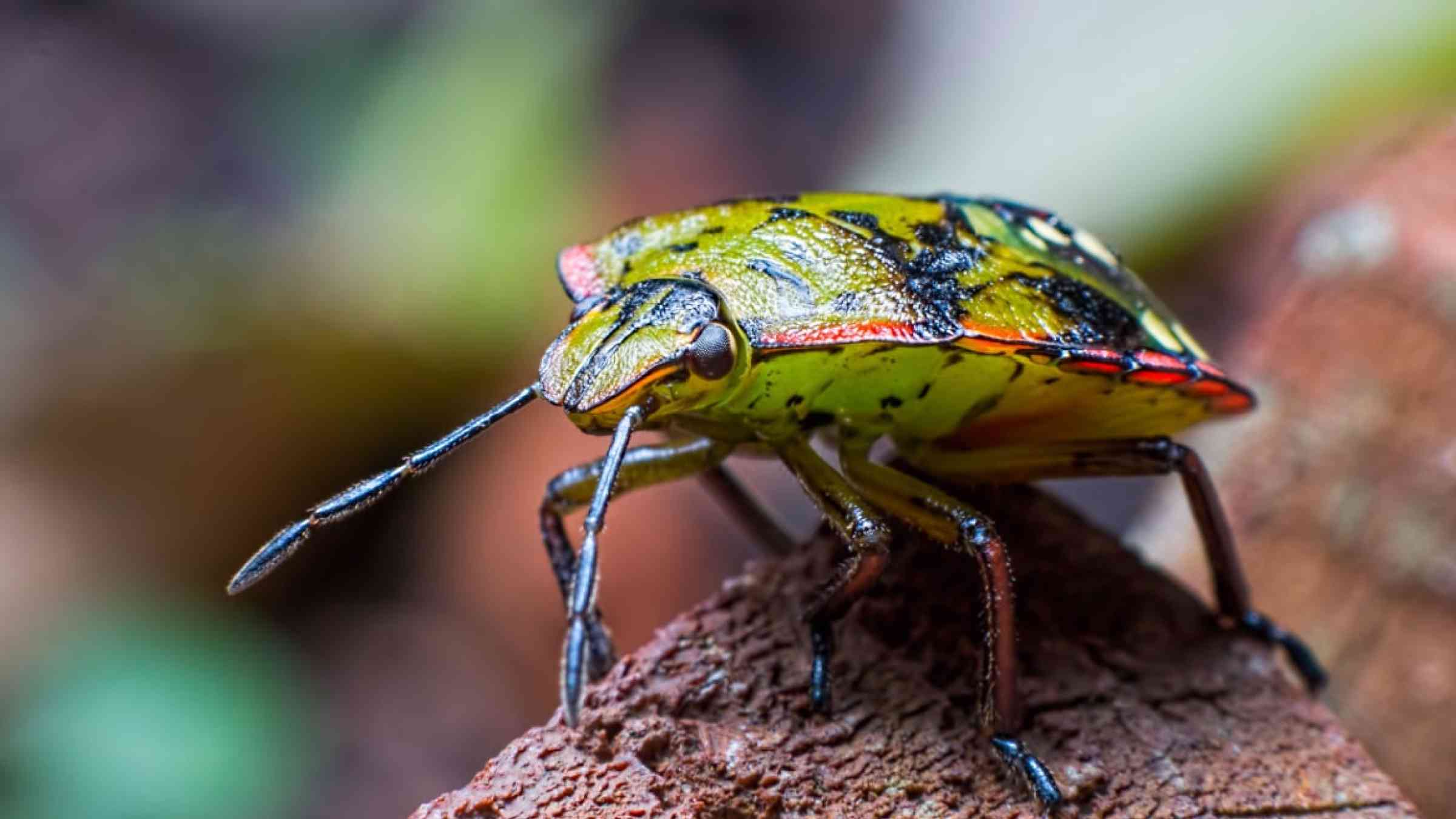Please help us improve PreventionWeb by taking this brief survey. Your input will allow us to better serve the needs of the DRR community.
Invasive stink bug habitat could expand with climate change

A foul-smelling, voracious, wide-spread pest could become even more ubiquitous with climate change.
A recent modelling study found that changing weather could increase suitable habitat for the brown marmorated stink bug in the United States by 70%. The study, published in Pest Management Science, draws on data from a three-year stink bug monitoring effort in 17 states as well as several potential climate scenarios. However, whether the insects will thrive in new places depends on the conditions of each area and potential mitigation measures.
“Every system will change with climate change, so the fact that you can grow garbanzo beans, lentils or wheat without these pests now, doesn’t mean that you will not have them in a few years,” said study lead author Javier Gutierrez Illan, a Washington State University entomologist. “There are mitigating things that we can do, but it is wise to prepare for change.”
The study found that overall, there is likely to be a northward shift in stink bug-friendly conditions. Regions that may be particularly affected include the Mid-Atlantic, areas surrounding the Great Lakes, and the valleys of the West Coast, such as the Sacramento Valley in California and the Treasure Valley in Idaho.
The brown marmorated stink bug is a generalist herbivore — it is known to feast on nearly 170 different plants including crops and ornamental plants. Originating in Asia, this type of stink bug first appeared in the U.S. about 20 years ago and has since spread coast to coast. It’s been detected in 46 states and considered a pest in 15 of them.
Homeowners may recognize brown marmorated stink bugs because they like to overwinter indoors. In fact, the study found that proximity to populated areas appeared to help the insects get established in new places, but once there, they did not need to be near people to proliferate. Other factors like availability of water mattered more for their abundance.
People are likely inadvertently transporting stink bugs in vehicles or farm equipment to areas that would otherwise be hard for them to reach by flying alone, said Gutierrez Illan.
Stink bugs dislike cold winters, but the rising temperatures brought by climate change are not necessarily a good thing if the land becomes too dry. They need water, so the researchers said that changing patterns of precipitation will likely influence where the stink bugs will thrive.
In some states including Washington, officials and researchers are employing a parasitoid insect, called the samurai wasp, to control stink bugs. The wasps lay their own eggs inside stink bug eggs. This not only destroys the affected eggs, but when the wasp larvae hatch, they eat other developing stink bugs. Measures like these might help prevent or minimize stink bug spread into new areas, Gutierrez Illan said.
For Washington growers, the researcher recommended using WSU’s DAS, or Decision Aid System, a web-based tool which provides information to help prepare for changes to their agricultural systems, including the possible appearance of these pests.
Gutierrez Illan also advised growers to familiarize themselves with the brown marmorated stink bug through sites like stopbsmb.org, even if they have never had the pest in their fields.
“Most growers learn from their parents or from the previous generation, but the information that they had is probably no longer as useful because the climate is changing, so they need these types of tools,” Gutierrez Illan said.
Explore further
Please note: Content is displayed as last posted by a PreventionWeb community member or editor. The views expressed therein are not necessarily those of UNDRR, PreventionWeb, or its sponsors. See our terms of use
Is this page useful?
Yes No Report an issue on this pageThank you. If you have 2 minutes, we would benefit from additional feedback (link opens in a new window).